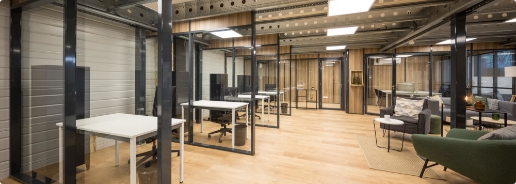
Industrial outdoor storage
From simple canopies to full-scale storage halls, our factory-built solutions will help you protect all types of products and goods from the elements: wood, building materials, long loads, vehicles and boats...
Our design office takes into account your climatic and environmental constraints to offer you a tailor-made installation.

What are the different types of outdoor storage?
There are 3 main types of outdoor storage facilities: open outdoor storage, semi-open outdoor storage, and metal canopies.
Open-air warehouse

PROVOST MANUFACTURING
In our factories

MADE-TO-MEASURE
Heavy and long loads of all types
An open-air outdoor warehouse is most often made up of completely uncovered racks. These may be cantilever or pallet racks.
However, these racks can also be fitted with canopies or sheet metal cladding on the bottom or sides.
This type of installation is equally suited to large and small storage volumes.
I have a project!Semi-open-air warehouse

PROVOST MANUFACTURING
In our factories

ECONOMICAL
Alternative to construction
Also known as a storage hall, this type of warehouse is roofed, but has at least one open side.
On average, self-supporting warehouses are 30% to 50% less expensive than the construction of a new building.
It's a good compromise for cost-effective outdoor storage of large volumes of goods that need better protection against the elements.
I have a project!Metal canopies and canopies

PROVOST MANUFACTURING
In our factories

MODULAR
Suitable for a wide range of uses
Our metal shelters are a modular, easy-to-install solution that can be used for a variety of purposes: storage canopies, carports (carports), weather protection for unloading goods..
Our canopies are equally well-suited to installation in an ERP or industrial zone.
I have a project!What are the advantages of outdoor storage?
Outdoor storage is generally more economical than storage in a covered warehouse, since there's no need to erect a building. Walls or intermediate partitions and fences are all that's needed to delimit the space.
An open or semi-open warehouse generally houses materials and products that do not mind being exposed to the elements. It is therefore common to store machinery, vehicles, profiles or raw materials for industry, the timber trade or building materials.
That said, given the lack of space in warehouses, more and more professionals are turning to outdoor storage for their heavy, bulky goods. What's more, an outdoor warehouse such as a storage hall can be adapted more easily to changes in activity, as it can easily be dismantled for expansion, unlike a permanent building.
However, because of the risk of theft, outdoor storage should be reserved for heavy, bulky products that cannot be easily transported.

Customized design by our engineering department
To ensure your system's optimum resistance to adverse climatic conditions, our integrated design office analyzes the environmental conditions in the region where your storage system will be located:
- maximum and minimum temperatures ;
- wind conditions
- presence of snow ;
- soil quality...
The structure and finish of our shelving systems are designed to increase their resistance to corrosion and external climatic conditions.
Contact one of our experts to discuss your project!
What are the specific criteria for outdoor storage?
As with any storage facility, it's important to respect the load capacity per level and per ladder. But there are other constraints to consider too:
- Choose corrosion-resistant installations. Choose hot-dip galvanized steel: this thicker coating is more resistant to corrosion. It's also particularly well-suited to seaside installations exposed to sea spray.
- Call on a design office capable of adapting your installations to local climatic and environmental conditions. For the same storage volume, you can't simply install the same shelving outdoors as you would indoors. Rack heights and ladder dimensions must take into account wind conditions, to guarantee safe storage.
- Determine whether your products need protection from the rain. If so, you'll need to fit your racks with canopies and cladding on the bottom or sides.
A few tips to ensure the safety of your outdoor installations
- Optimize layout for the circulation of handling equipment
Set up well-organized aisles to facilitate traffic flow. Your shelving can be fitted with guide rails for forklift trucks to avoid collisions with the structure. You should also consider installing protections on your uprights (shoes, anti-shock bumpers...), again in galvanized steel to withstand outdoor conditions. - Install clear signage
The same regulations apply to floor markings and signage as indoors. You need to clearly demarcate the different areas of your outdoor warehouse to avoid accidents caused by the cohabitation of pedestrians and vehicles.
Don't forget to install load plates on your racks to remind them of their maximum load capacity, in compliance with European standards. Be sure to use specific plates that are resistant to rain and UV rays. - Ensure lighting and cleaning
For night-time visibility, you need to install sufficient lighting to guarantee the safety of your teams.
In the open air, cleaning is even more important than indoors, since your installations will be more exposed to dirt from bad weather, dust and outdoor pollution.





